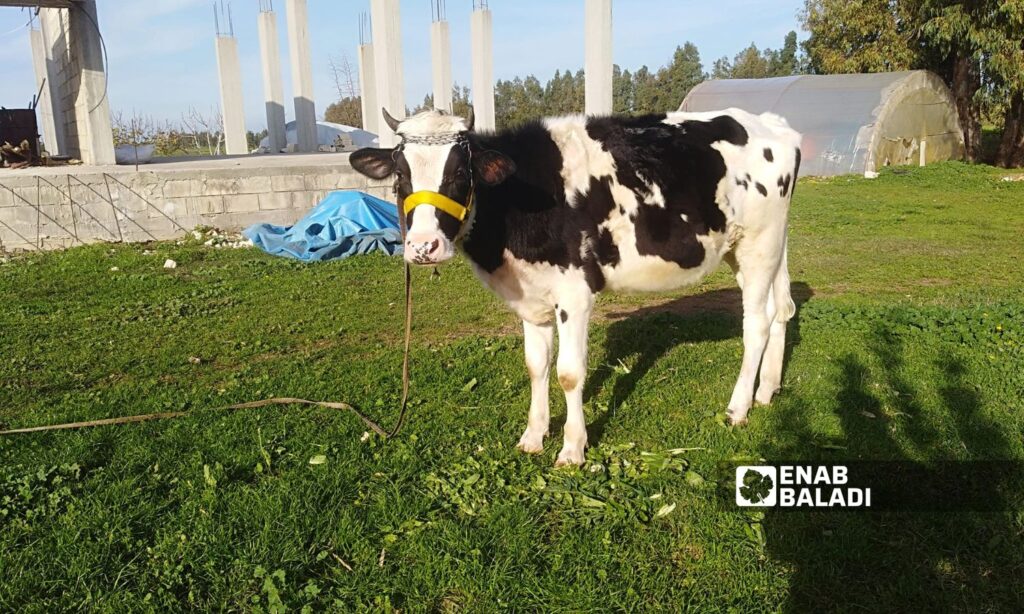The Ministry of Agriculture in the Syrian regime’s government announced the initiation of an electronic tagging process for female cattle during the last three months of the current year.
On Sunday, June 23rd, the Ministry’s Director of Animal Production, Mohammad Khair al-Lahham, stated that the electronic tagging of the female cattle herd would begin in the last quarter of the current year. Each cow in all governorates will receive a unique electronic number without repetition, after completing all the necessary requirements for the tagging process, including numbers, tags, and electronic readers.
According to al-Lahham, the tagging process aims to obtain accurate numbers of the cattle herd, build a national register, identify and resolve problems, contribute to strategies for developing the herd, monitor its performance, identify investment opportunities, determine its actual needs for production essentials, and ensure fairness in providing various services, especially feed and veterinary vaccines.
The number of cattle in regime-controlled areas reached about 574,550 head, according to last year’s Ministry of Agriculture statistics.
In August 2023, the government approved the livestock tagging and registration project prepared by the Ministry of Agriculture and Agrarian Reform, aiming to accurately count the livestock herd and determine its actual needs.
The tagging plan is linked to a database that ensures knowledge of each animal’s owner, family, preventive vaccinations received, and productivity.
Varying decrease in numbers
Between 2011 and 2021, the number of lactating animals varied for each type. The number of cattle heads decreased by 25%, goats by 17%, and sheep by 7%.
Changes also occurred in the heads of agricultural animals, with the most significant decline in the donkey herd at around 48%. The number of purebred Arabian horses decreased by 36%, but Syria did not lose any breed entirely.
Before 2011, Syria’s livestock was responsible for about 40% of total agricultural production and provided jobs for approximately 20% of the rural workforce.
On average, about 35% of rural households considered livestock breeding their primary source of food and income.

